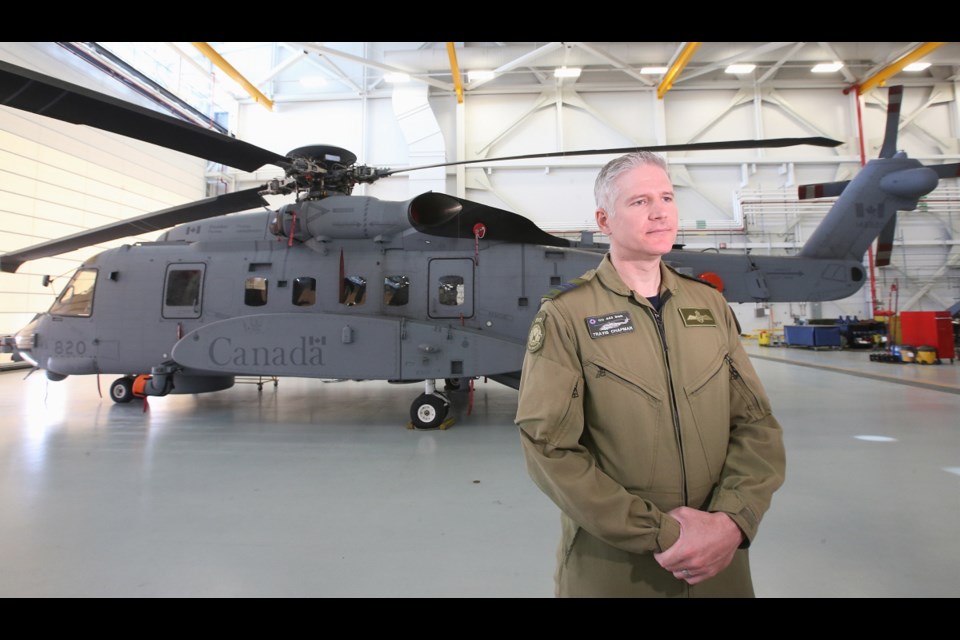It’s easy to tell that the most recent addition to the 443 Maritime Helicopter Squadron fleet — a CH-148 Cyclone helicopter — is fresh from the manufacturer.
“Some of them still have the new-car smell, which is nice,” said Lt.-Col. Travis Chapman, the squadron’s commanding officer. “We’re pretty excited to be ramping up in the 148 Cyclone age.”
Cyclones first began to arrive in Canada in 2015 as a replacement for the Sea King — a mainstay in the Canadian military for the past 55 years. The cost of all 28 Cyclones coming from U.S. company Sikorsky through 2021 is $3.2 billion. That includes associated costs such as project management and contingencies.
Chapman said the squadron’s second Cyclone is scheduled to arrive in September and a third by the end of the year. The squadron should receive its full contingent of nine in over the next three years.
Sea Kings, including the five at 443 Squadron that are operational, will fly only until the end of the year. A sixth Sea King at the squadron has already been retired.
The Cyclone is understandably far more advanced than the Sea King, Chapman said.
“From a warfare perspective, the Cyclone is literally generational leaps ahead of the Sea King.”
It can carry more personnel and equipment, and has improved capability for conducting rescue operations, he said.
The squadron’s Cyclone is at the Abbotsford Airshow this weekend for a static display. Two Sea Kings are there as well, with one giving a flying display as a “last hurrah” for the airshow crowd as retirement looms, Chapman said.
He said some of the military’s Sea Kings are bound for museums and some could be sold or scrapped.
443 Squadron hopes to send a Cyclone for deployment on a ship, HMCS Regina, for the first time in January.
Chapman, who has flown both a Cyclone and Sea Kings, said the Cyclone is “far more challenging” because it has more equipment and more capability.
Capt. Alex Chatwin, who has just arrived at 443 Squadron after two years flying Cyclones at 12 Wing Shearwater in Nova Scotia, said one big difference is that Cyclones are digital, while Sea Kings are largely analog.
“It’s very stable,” he said of the Cyclone. “It’s amazing.”
Training and gaining experience with the Cyclone is the aim of personnel, said Sgt. Keegan Bulger, who works in maintenance.
They want to gain the same level of expertise that was honed with Sea Kings, he said.
“The Sea King’s always been there for us,” Bulger said. “The nice thing with the Sea King was that the maintenance program was well-ingrained, so everyone just knew what to do when there was something to do.”
The Cyclone is able to direct maintenance staff at times, Bulger said.
“The aircraft has millions of sensors on it, and a lot of times it will diagnose right down to a component,” he said. “Sometimes you’ve got to be a little more interpretive and use your technical skills and your job knowledge.”
The advancements in the Cyclone program are encouraging, he said.
“Now all the fruits of our labour mean something,” he said. “Now we’re building the knowledge throughout the trades and throughout the ranks.”
The building of the Cyclones has suffered years-long delays, with the manufacturer citing technical issues several times.
The original goal was to have all 28 in place by 2008.



